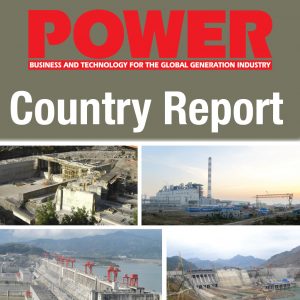Description
Every year, tornadoes, earthquakes and other natural disasters injure and kill thousands of people and damage billions of dollars worth of property. Often, it is almost impossible to predict or prevent the occurrence of these disasters. However it is possible to reduce their impact by developing a disaster management and recovery planning strategy.
This report on Disaster Management and Recovery Planning is a detailed guide for utilities, power plant operators, pipeline and transmission line operators, businesses, governments, communities and emergency operations teams to develop and maintain a disaster management and recovery plan.
It outlines the four phases of a disaster: Mitigation, Preparedness, Response, and Recovery and provides detailed instructions on developing a mitigation plan prior to a disaster.
The report examines long and short-term goals for mitigation, planning and recovery from disaster along with initiatives that U.S. government has taken in recent years. The report has a special focus on management of energy infrastructure during the time of disaster and presents a checklist for emergency response and recovery.
Disaster management is a systematic approach towards preparing for disaster before it happens and includes disaster response – emergency evacuation, quarantine, mass decontamination – as well as supporting and rebuilding society after natural disasters have occurred. Efficient disaster management relies on thorough integration of emergency plans at all levels of government and non-government involvement.
Disaster preparedness, emergency management and post disaster recovery is highly dependent on economic and social conditions local to the disaster. However, the basics steps for disaster management remain same in all scenarios. Preparedness is the first step to counter disaster, which involves developing plan of action and it, includes communication, chain of command development, proper maintenance and training of emergency services and development of emergency warning systems along with emergency shelters and evacuation plans.
The next step is response, which includes mobilization of the necessary emergency services such as firefighters, police, and ambulance that may be supported by a number of secondary emergency services, such as specialist rescue teams. Recovery from disaster involves restoration of the affected area including destroyed property, re-employment and redevelopment of essential infrastructure. Mitigation efforts attempt at preventing hazards from developing into disasters or reducing the impact of disasters and it focuses on long-term measures for reducing or eliminating future risks.
This report details disaster management and various steps from planning to prepare against any disaster. It highlights the role of government agencies and local authorities at the time of disaster as well as before and after it.
Pages: 208, Delivered in a PDF
Published: April 2015
Publisher: Red Mountain Insights
Executive Summary
Introduction to Disaster Management
Overview:
Classification of Disasters
Natural Disasters
Man Made Disasters
Phases of the Disaster
Mitigation
Preparedness
Response
Recovery
Preparing for a Disaster
Planning Process
Research
Development
Validation
Maintenance
Disaster Preparation and Emergency Preparedness
Direction and Control
Communications
Warning
Emergency Public Information
Evacuation
Mass Care
Health and Medical Services
Resource Management
Pre-Disaster Planning
Policy Considerations
Long Term Goals
Short-Term Recovery Issues
Economic Recovery
Establishing the Means to Facilitate Recovery
Building a Disaster-Resistant (Sustainable) Economy
Mitigation
Pre-disaster Mitigation
Seizing Post-Disaster Opportunities
Regulatory Planning Considerations
Hurricanes
Tornadoes
Earthquakes
Floods
Natural Disasters and Energy Infrastructure
Damages from Japan’s Earthquake and Tsunami
Damages from Australian Floods
Damages from Hurricanes Rita and Katrina
Petroleum
Natural Gas
Lessons Learned
Dependence
Refining and Reprocessing
Pipelines
Natural Gas
Protecting Critical Energy Infrastructure
Overview
Role of Distributed Energy Assets
Grid Security
Grid Stabilization
Reliable Power Quality
How Distributed Energy Assets Can Help
Post-Event Recovery
Stationary Energy Assets
Deployable Energy Assets
Meeting Critical Needs and Recovery
Economic and Policy Considerations
Protecting Critical Energy Infrastructure
Post-Event Recovery
Disaster Management during an Earthquake
Classifying an Earthquake
Nature of Losses and Damages
Recognizing an Earthquake
Immediate Injuries
Immediate Safety
Predicting an Earthquake
Construction of Homes in Earthquake-prone Zones
Earthquake-Proof Your Home
Disaster Management During Flooding
Introduction
Flood Prone Areas
Loss due to Flooding
Indicators of Possible Flooding
Prevention of Flood
Being Prepared
Macro Level Efforts
Disaster Management during Nuclear Leaks
General Preparedness during Disasters
Government Initiatives
Critical Energy Infrastructure Protection
Critical Infrastructure Protection Working Group
Transportation Emergency Preparedness Program
Comprehensive Emergency Management System
Emergency Operations and Contingency Response
Environmental Management Program
International Organizations Involved in Disaster Management
International Association of Emergency Managers
Red Cross/Red Crescent
United Nations
World Bank
European Union
International Recovery Platform
Country Organizations for Disaster Management
Australia
Canada
Germany
India
The Netherlands
New Zealand
Russia
United Kingdom
United States
Preparedness and Recovery Checklists
Facility Identification
Critical Asset Identification
Threat Applicability
Identification of Physical Security Systems
Electric Power Supply and Distribution
Electric Power Supply and Distribution
Petroleum Fuels Supply and Storage
Natural Gas Supply
Transportation
Emergency Service
Internal Computers and Servers
SCADA Systems
Appendix
Glossary





